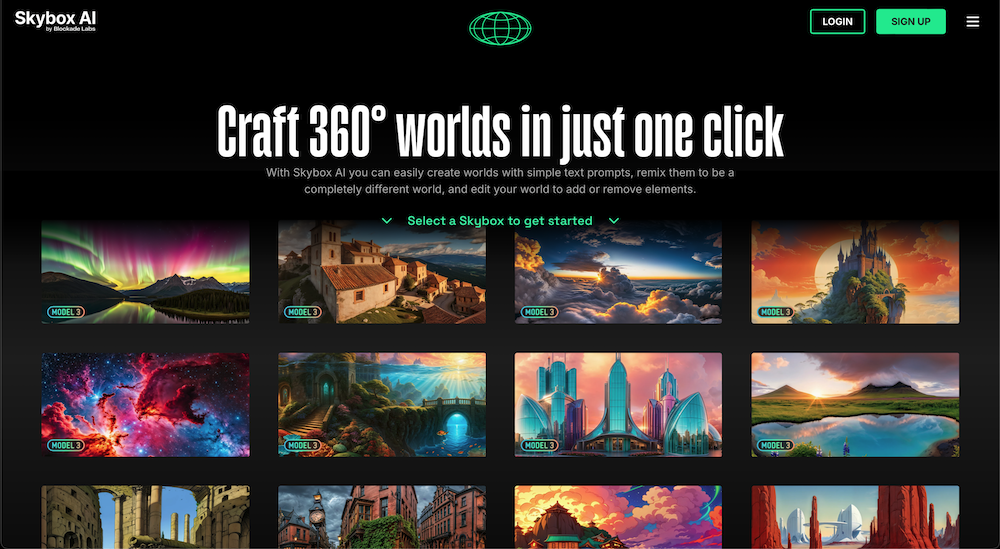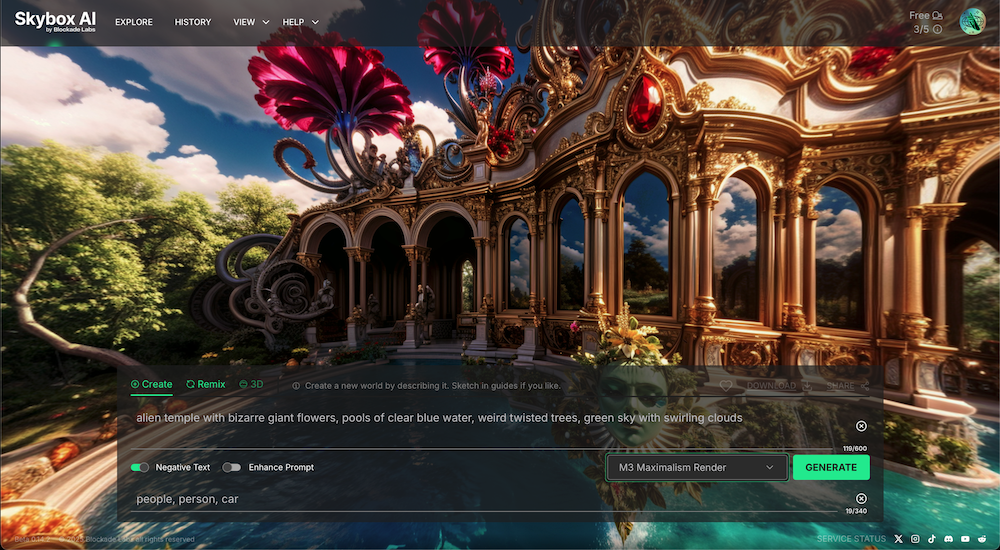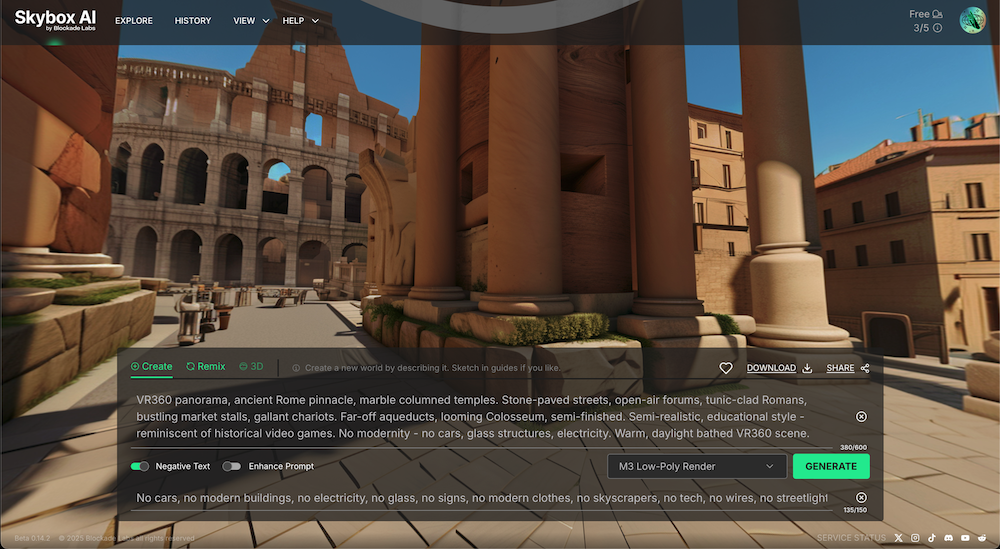Enter all the desired criteria: the apps that satisfy them all will be searched; if a criterion is specified multiple times, only the last occurrence will be considered.

 The following is the Skybox AI editing screen, where, once logged in, you can submit your generation request by entering a text prompt, preferably in English for more accurate results. Next to the ‘Generate’ button, you can select the desired style from those available. You can also fill in the ‘Negative Text’ field to indicate elements that the artificial intelligence should avoid including in the final result and activate the ‘Enhance Prompt’ option to receive suggestions for improving your prompt. The image below shows an example of a default generated world, which changes every time you refresh the page, modifying both the prompt and, consequently, the background world.
The following is the Skybox AI editing screen, where, once logged in, you can submit your generation request by entering a text prompt, preferably in English for more accurate results. Next to the ‘Generate’ button, you can select the desired style from those available. You can also fill in the ‘Negative Text’ field to indicate elements that the artificial intelligence should avoid including in the final result and activate the ‘Enhance Prompt’ option to receive suggestions for improving your prompt. The image below shows an example of a default generated world, which changes every time you refresh the page, modifying both the prompt and, consequently, the background world.  Below is an example of the ancient Roman world generated with Skybox AI using the ‘Low-Poly Render’ style. The project is automatically saved to your account, and you can copy the link to share it with other users or on social media. However, you need a paid plan to download the world.
Below is an example of the ancient Roman world generated with Skybox AI using the ‘Low-Poly Render’ style. The project is automatically saved to your account, and you can copy the link to share it with other users or on social media. However, you need a paid plan to download the world.  The Skybox AI ‘History’ page shows a complete list of past works generated by the user. Here you can view all previous creations and filter them according to criteria such as style, keywords, favourites (likes), creation date, from most recent to least recent and vice versa. This feature makes it easy to manage and organise your worlds and projects, allowing you to quickly find the content you want and resume or edit work you have already done.
The Skybox AI ‘History’ page shows a complete list of past works generated by the user. Here you can view all previous creations and filter them according to criteria such as style, keywords, favourites (likes), creation date, from most recent to least recent and vice versa. This feature makes it easy to manage and organise your worlds and projects, allowing you to quickly find the content you want and resume or edit work you have already done.  Skybox AI can be used in educational settings to: create immersive and detailed 3D environments that promote spatial and historical understanding; virtually reconstruct historical places and periods for interactive and multidisciplinary lessons; support the teaching of history, geography, architecture, and art history with realistic and engaging visualisations; enrich the educational experience with immersive experiences that increase student interest and participation.
Skybox AI can be used in educational settings to: create immersive and detailed 3D environments that promote spatial and historical understanding; virtually reconstruct historical places and periods for interactive and multidisciplinary lessons; support the teaching of history, geography, architecture, and art history with realistic and engaging visualisations; enrich the educational experience with immersive experiences that increase student interest and participation.
Copy link